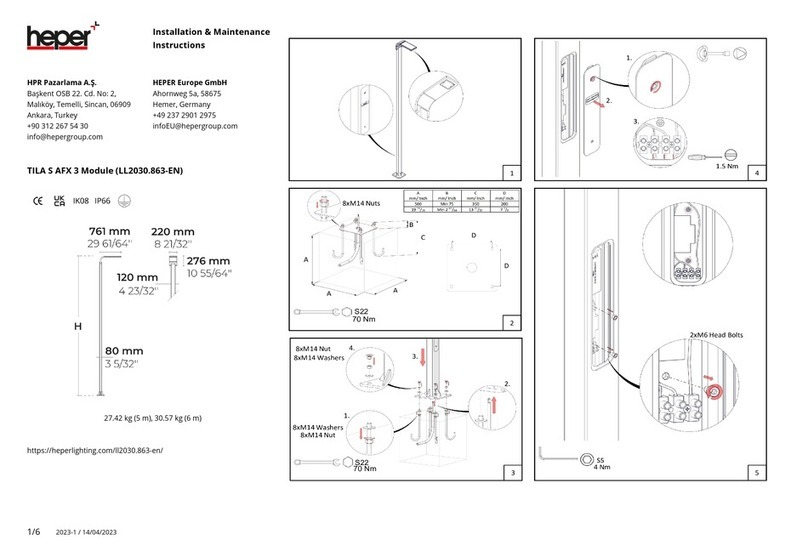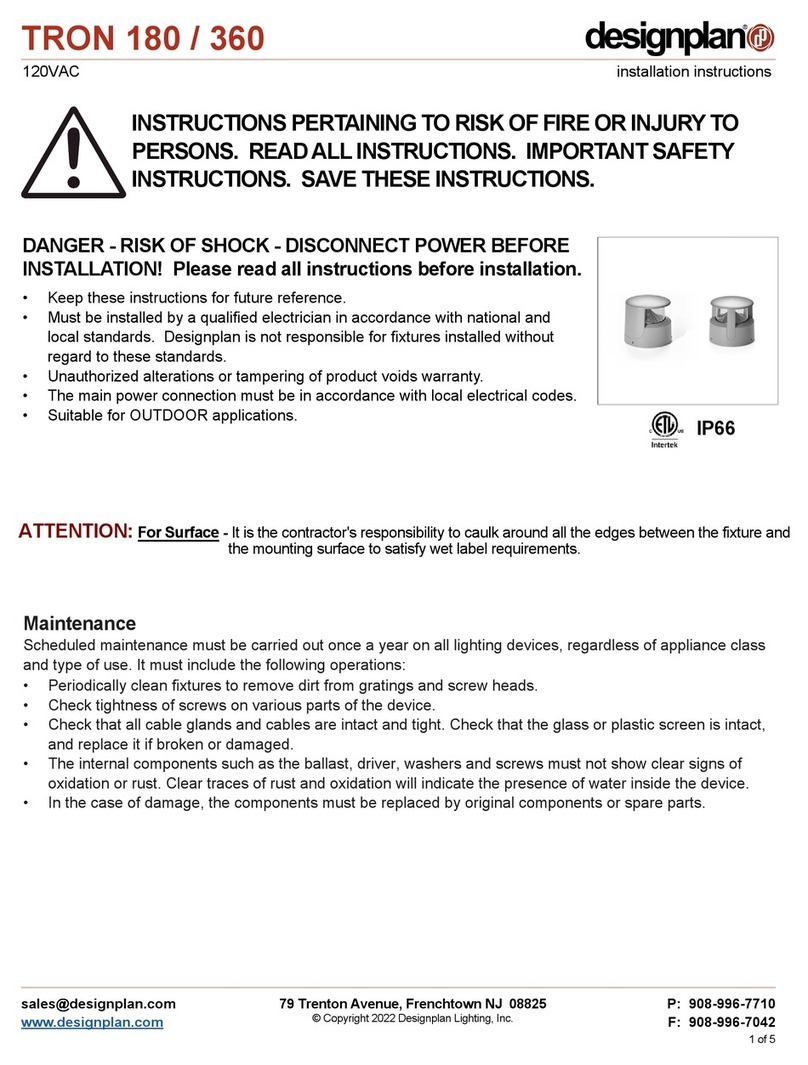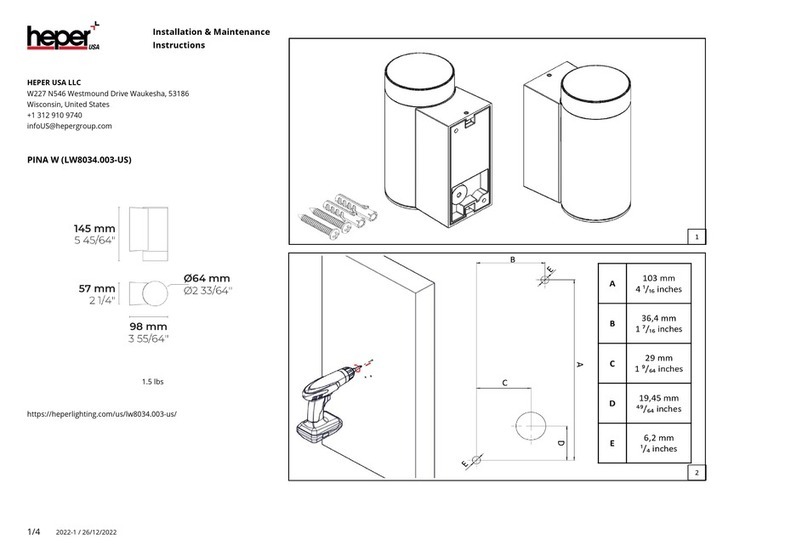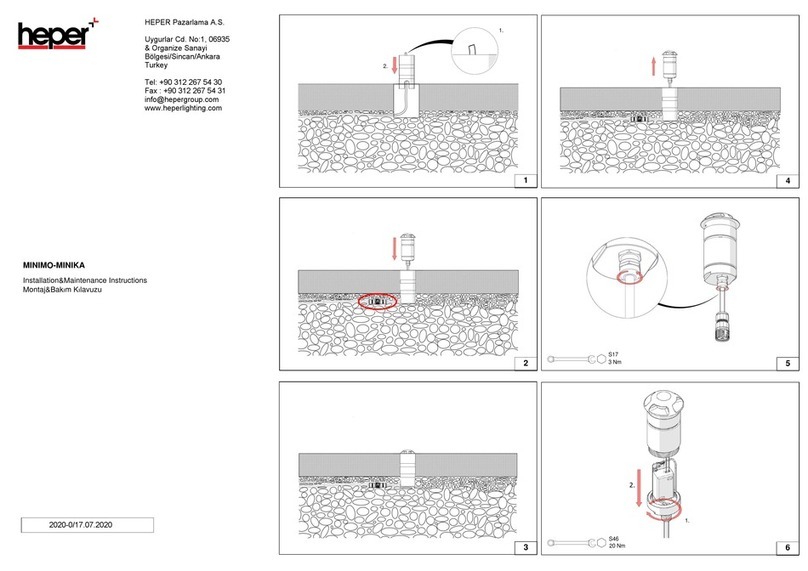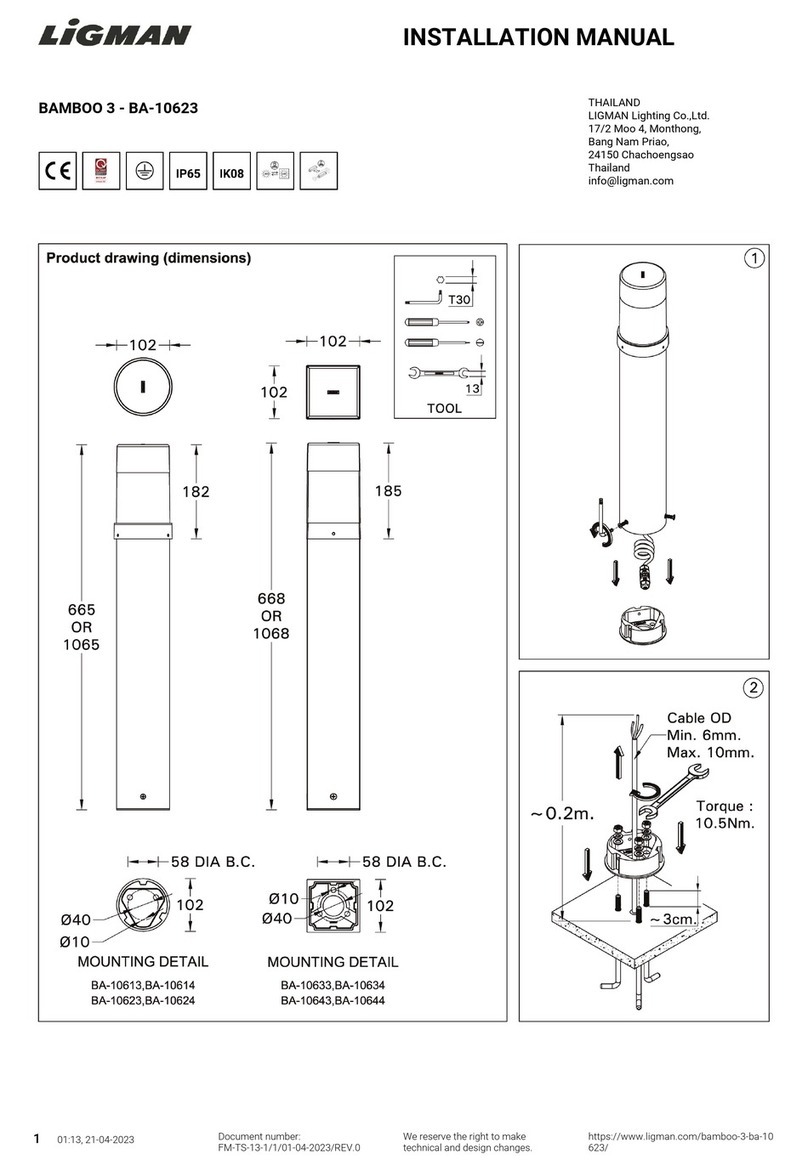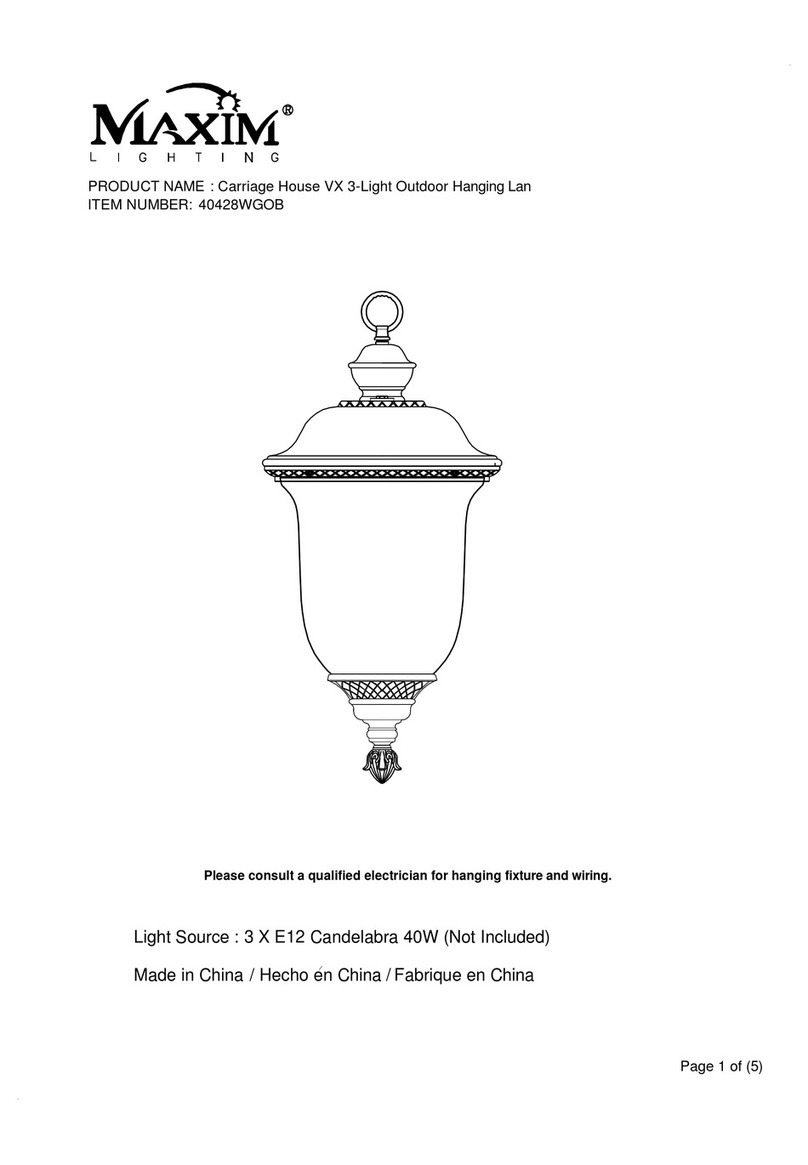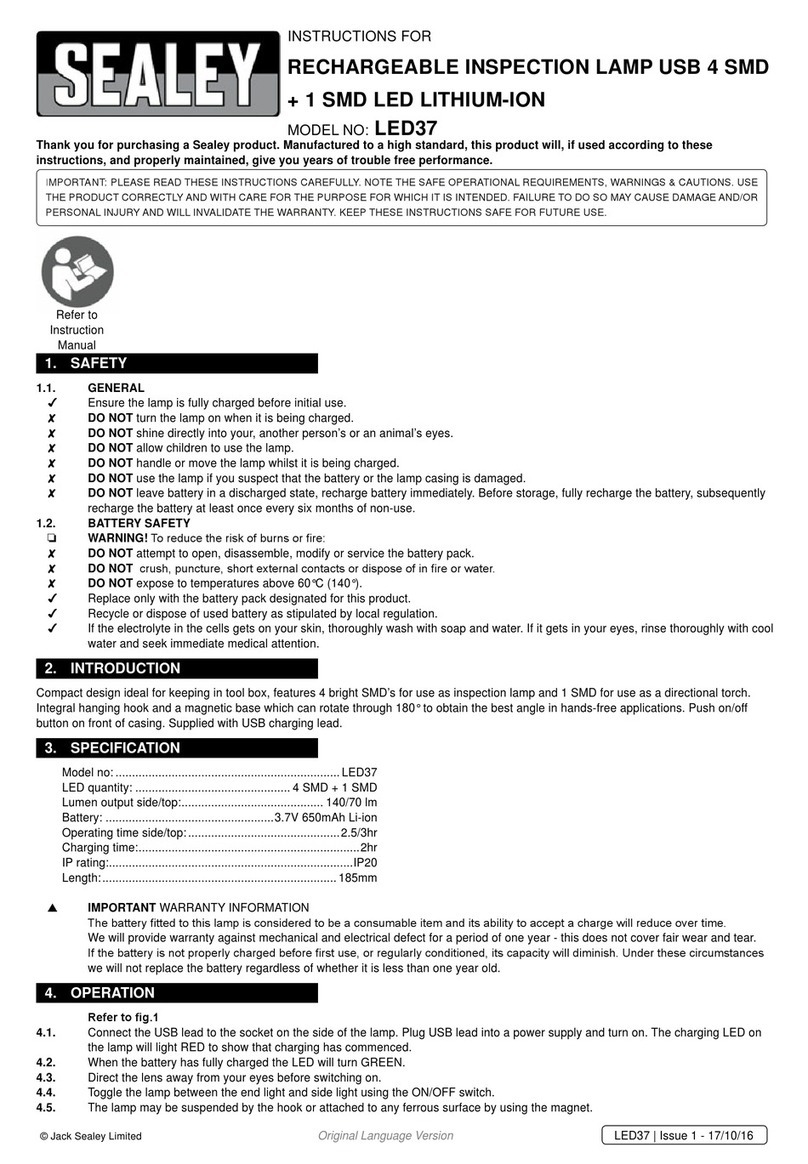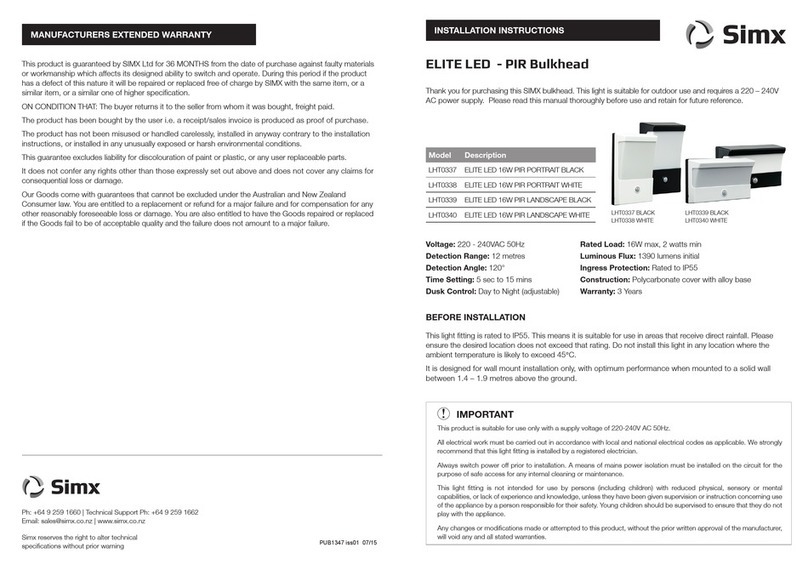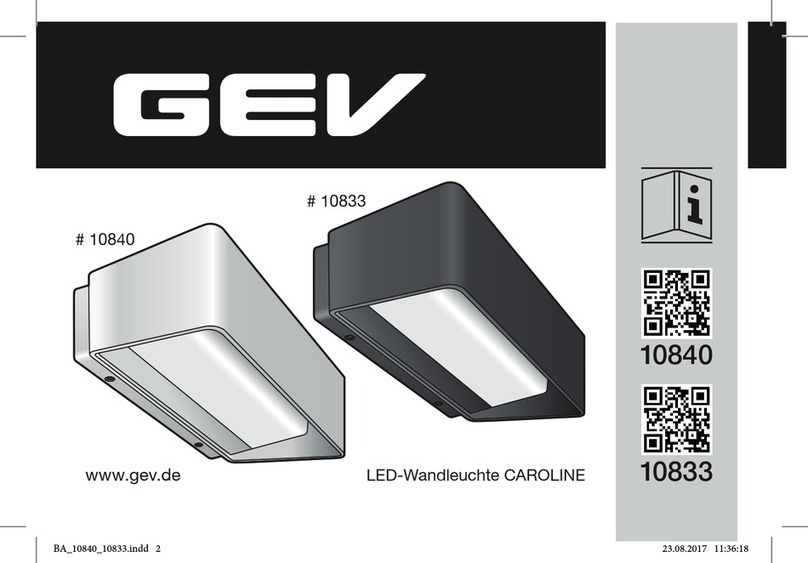
3
The L16 battery is supplied with a factory fitted
“OCBL-T” fuse (M455323), required for
protection of the internal battery circuitry.
Use of any other fuse type could result in
damage and will invalidate any warranty claim.
IMPORTANT
Pay close attention to Warnings and Cautions in
this manual.
A WARNING describes a condition that may cause
severe personal injury or death if allowed to
happen.
A CAUTION describes a condition that may cause
moderate injury or property damage if allowed to
happen.
GENERAL DESCRIPTION
The GL9/GL16 cap lamp systems consists of a cap
mounted headpiece powered by a Li Ion battery.
The basis of the headpiece in which some of the
internal connections are integral is as follows:
A selector switch is incorporated, which can switch
on either the large main bulb or the small
secondary bulb. The main bulb is held in the
reflector in a focused position by a screwed bush
from which a lead connects to one of the cable
termination points. The small bulb holder is
positioned at the top of the headpiece, being
connected internally to the cable termination. The
reflector fits over the small bulb and has a rubber
gasket around the rim to seal against the
headpiece lens.
PREPARING THE GL9 or GL16 CAP LAMP FOR
FIRST TIME USE
The battery is packaged separately to the lamptop
and needs to be connected before use.
Tool kit required is M614830
NOTE: THE BATTERY IS TRANSPORTED IN A
PARTIALLY CHARGED CONDITION - EVERY
BATTERY MUST BE FULLY CHARGED
BEFORE FIRST USE.
Remove the battery from the shipping box and
check for damage. The battery is supplied with the
encapsulated fuse fitted, terminal nuts and
washers.
Remove the nut and washer from the positive end
of the fuse (marked +). Place the ring terminal of
the red wire onto the terminal post, replace the
spring washer and nut, and tighten to 0.5Nm.
Remove the nut and washer from the negative
terminal (not connected to the fuse) and place the
ring terminal of the black wire onto the terminal
post, replace the spring washer and nut, and
tighten down to 0.5Nm.
Hook the cable exit end of the battery cover onto
the battery.
Check that the cables are not trapped under the
edge of the cover then press down into position.
Secure the cover in place with the clip and M4
mushroom head socket screw.
Battery charging
WARNING
Li Ion batteries must only be charged on a
specific charger with a Li Ion charge profile. If
the battery is charged on a standard GT
caplamp charger the battery will be damaged.
For charger information and how to convert
existing charger software please consult the
Caplamp Charger Manual.
Every battery must be charged before it is used for
the first time.
Never discharge completely!




